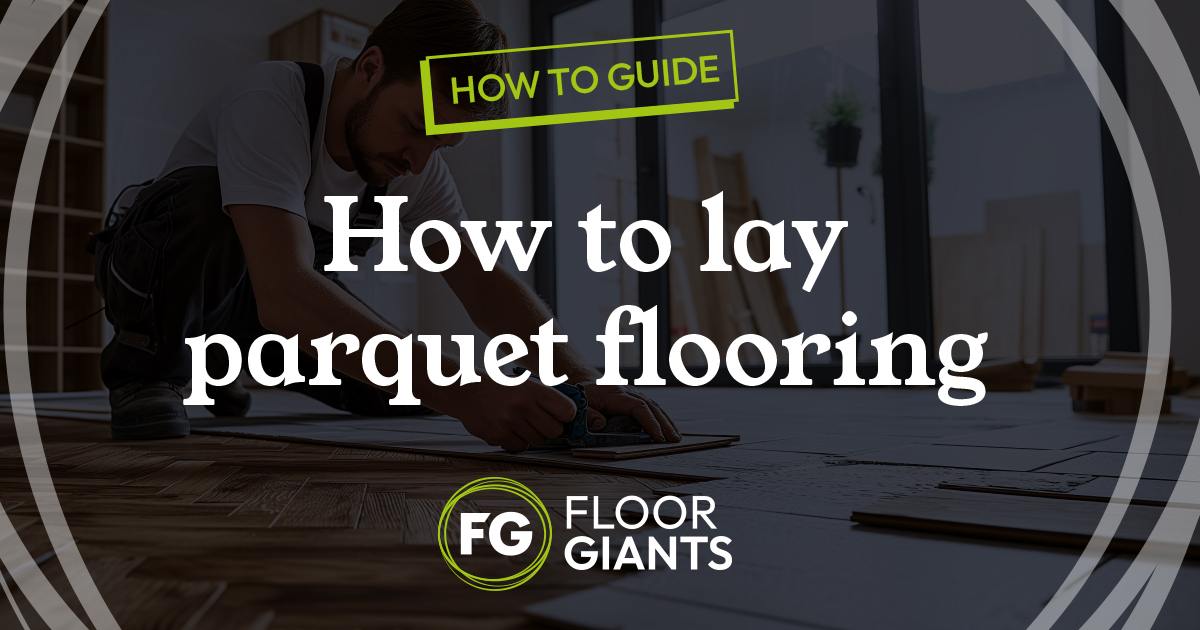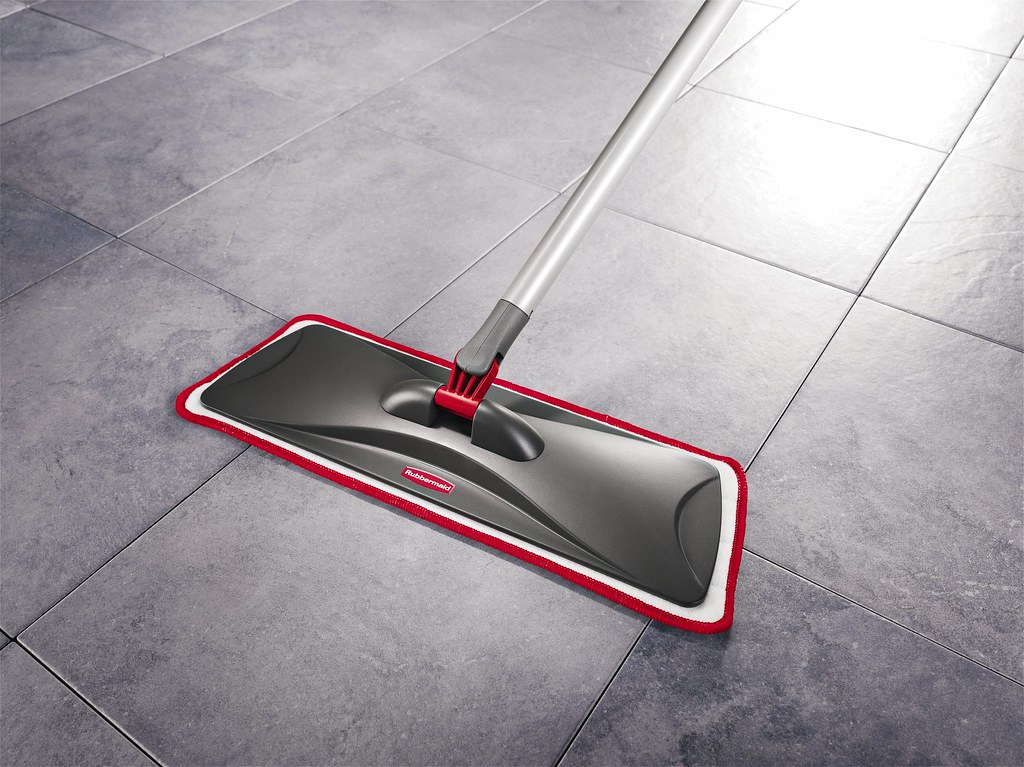How to Lay Parquet Flooring
How to Lay Parquet Flooring

Parquet flooring is an elegant and chic type of flooring, which is hugely popular amongst homeowners.
For those of you who are unfamiliar, parquet flooring consists of a series of small, wooden blocks (most commonly made of hardwood) which are arranged in geometric patterns.
There are a number of key benefits to investing in parquet flooring, particularly the visual wow-factor of its decorative appearance, its durability (thanks to the use of hardwood), and its ability to boost the resale value of a property. Plus, parquet flooring is highly versatile, and is available in a wide variety of different colours and pattern layout options.
What’s more, it’s also deceptively easy to install.
Don’t believe us? To help you see how simple this process is, our flooring experts have created a complete, step by step guide to laying parquet flooring below.
Step-by-step Guide for Laying Parquet Flooring
You will need the following equipment:
- Parquet flooring blocks
- Measuring tape
- Square edge
- Either a chop saw or a mitre saw
- Flooring adhesive
- Spacers
- Tapping block
- Mallet
- Power drill
- Nails or screws
- Sandpaper
- Your chosen finish (this could be, for example, varnish or polyurethane)
The process of laying parquet flooring:
1. Prepare the subfloor. To start the process, empty the room and clean and prepare the subfloor.
2. Cut the flooring blocks. Measure the dimensions of your room and calculate how many blocks you will need for the flooring. Then, cut the blocks to the required size.
3. Lay your underlay. This will need to be spread over the entirety of your subfloor.
4. Determine the layout of the blocks. Before you commit to floor layout, perform a dry-fit run of the blocks. Lay the blocks in your chosen pattern, and see how they look in place. At this stage, you may need to adjust the blocks, in order to create a neat, flawless fit.
5. Start to lay the blocks. Then, you can begin fixing the blocks in position. Do this by applying flooring adhesive to the back of the blocks, and fitting them in place, using spacers to ensure that the expansion gap remains consistent between the walls and the blocks.
6. Tap and fix the blocks. Use a mallet and tapping block to set and secure the blocks in place.
7. Sand to ensure a smooth finish. Once you have set the final row of the flooring and the adhesive is set, gently sand down the surface of the flooring.
8. Apply your chosen flawing finish. Finally, apply your choice of varnish or finish to the flooring. This will keep the flooring looking pristine, and help to maximise its lifespan.
Answering your most common questions about laying parquet flooring
Keep reading to find our experts’ answers to your most common parquet flooring questions.
How do you measure for parquet flooring?
Start by measuring the length and width of the room. Then, calculate the room’s total square footage by multiplying the length and width together.

Once you have the room’s footage, we recommend adding an additional 10% to this total. This will help you to ensure that you don’t under order your flooring (accounting for any off cuts, wastages, or other issues).
Finally, round up this figure to the nearest whole number, and this will tell you how much parquet flooring you need to order.
Do you need an underlay for parquet flooring?
Although it is not an absolute necessity, it is recommended that you use an underlay for your parquet flooring.
An underlay is a thin layer of material (typically made of foam, cork or felt), which sits underneath the flooring.
These are designed to create a smooth and level surface for the flooring. This makes it easier for the flooring to be installed, and for you to achieve a seamless result.
Plus, an underlay offers an extra layer of protection against moisture and other common causes of damage, reduces noise, improves the flooring’s insulation and extends the parquet’s lifespan across the board.
How to Prepare and Clean your Floor
Firstly, you will need to remove any old flooring and prepare the subfloor, so that it is left completely bare.
Then, sweep the flooring area. You will need to remove any dust, dirt and general debris from the subfloor, as this will ensure that your surface is smooth and even, ready for the underlayment and parquet flooring.

You will also need to ensure that your subfloor is free from cracks or holes. To do this, use a floor levelling compound to repair any cracks, holes or other floors in the subfloor. Don’t forget to sand down any raised areas created by the compound, before you start laying the flooring.
Can you have underfloor heating with parquet flooring?
Yes, you can have underfloor heating with parquet flooring.
But, it is important to note that not all types of parquet flooring are compatible with underfloor heating. This will depend on the type of parquet flooring that you choose, and the thickness of your flooring blocks.
So, if underfloor heating is a big priority for you, you will need to check that your preferred type of parquet flooring is compatible.
Can you lay parquet flooring on top of floor boards?
Yes, you can lay parquet flooring on top of floorboards.
But, in order for this to be done successfully, then you will need to ensure that your floorboards are clean and level. This is essential, as the parquet flooring will need an even and level base.
So, you might need to level and sand down your floor boards, before laying the parquet on top.
What is the best adhesive for parquet flooring?
This depends largely on the type of parquet flooring that you have chosen, and the material of the subfloor.
The most commonly used adhesives for parquet flooring are:
- Wood glue - ideal for solid parquet blocks and a wooden subfloor.
- MS polymer adhesive - best used for engineered parquet flooring or solid parquet blocks, especially when fitted alongside an underfloor heating system.
- Urethane adhesive - can be used with either engineered or solid parquet flooring
How long does it take for parquet flooring adhesive to set?
Naturally, this will largely depend on the type of adhesive that you use and the environmental conditions of the room in which the adhesive is drying.
But, generally speaking, an adhesive will typically take around 24-48 hours to set fully. But, some fast-drying adhesives can set in between 2-4 hours. So, we recommend checking the guidance provided with your chosen flooring adhesive.
Do you need to sand parquet flooring?
Although it is not an essential part of the process, sanding down the parquet flooring will allow you to achieve a sleek, even and flawless finish for your new flooring.
At Floor Giants, we offer a wide range of luxury parquet flooring. These are available in a huge variety of different material types and design styles, to cater to any home, aesthetic and budget. Our entire range of luxury parquet flooring is available to buy online or from one of our many UK stores.
So, if you would like to find out more about parquet flooring, or purchase luxury parquet flooring for your upcoming home renovation, the Floor Giants team is here to help.





